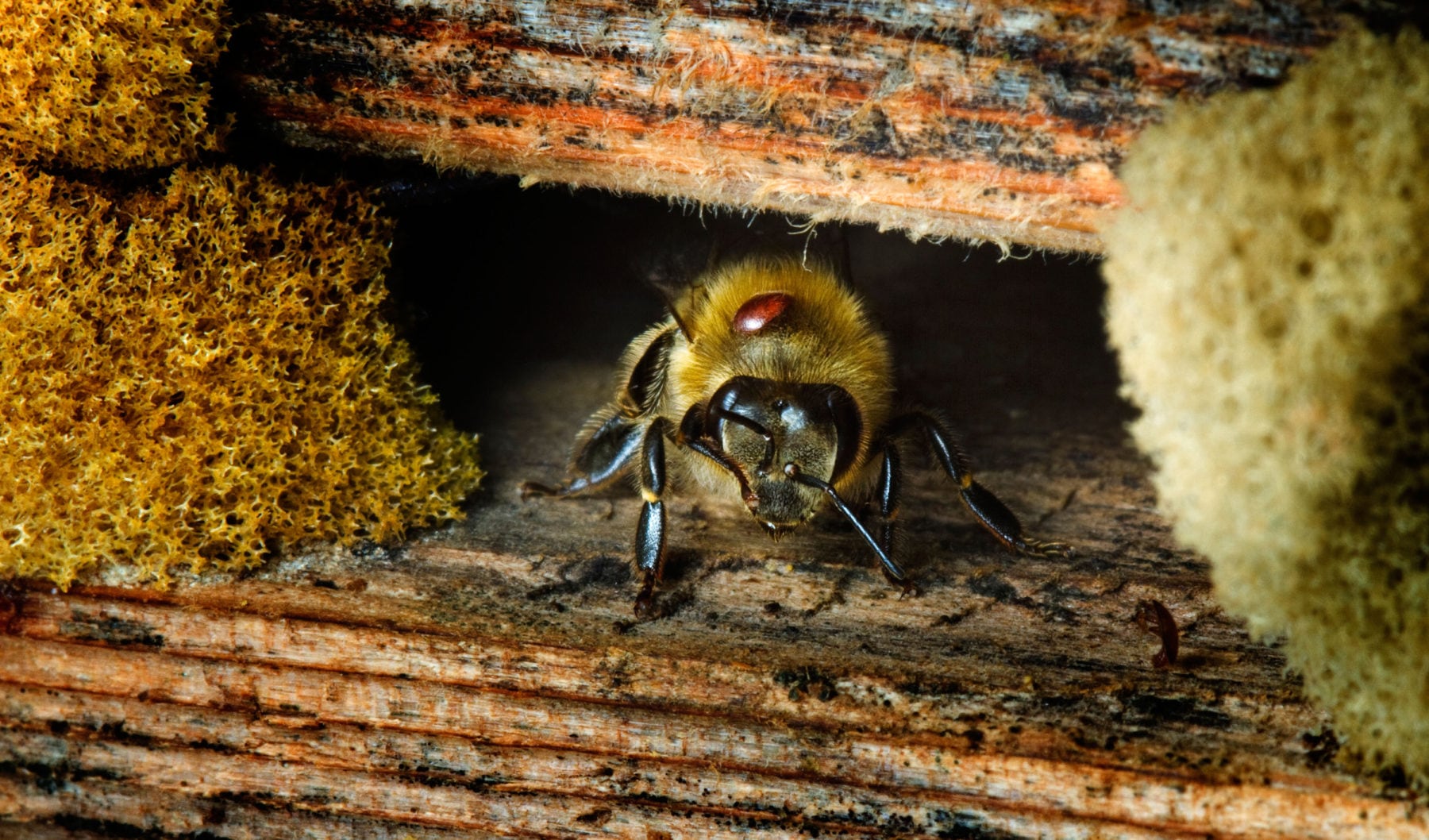“I HAD MY LITTLE grandson out in the garden with me the other day,” says Ian Cane, a beekeeper whose family has been in the industry for more than 100 years. “I’d planted some carrots, and I was showing him how the bees go from one carrot flower to the next to pollinate them. They don’t go over to the apple tree and mix up the pollen, and that’s why we don’t get something that’s half an apple and half a carrot. And he said to me, ‘That’s almost magic, isn’t it, Pa?’”
Magic, maybe, but a particularly practical kind of magic. “About one-third of the food we consume every day is reliant upon pollination from bees,” says Adam McNamara, executive general manager of Bega Foods.
The humble honeybee, it turns out, is an economic powerhouse: Australia’s agricultural and horticultural industries rely on bee pollination to the tune of about $6 billion every year. So any threat to our bee population is one that not only conservationists, but also food producers, are bound to take very seriously. And a tiny parasite aptly named Varroa destructor is a particularly deadly threat that’s spreading fast.
“If you look at the rest of the world, this mite has gradually invaded various continents and countries,” Ian explains. “It was in Europe around the late 1960s, and then Brazil and South America during the ’70s. It arrived in the USA and Canada in the late ’80s and New Zealand towards 2000. It has a devastating impact on honey production and all the crops that are dependent on honey bee pollination.”
The mite invariably kills untreated colonies within one or two years, and is equally dangerous to feral bee populations. When it reached the USA, it rapidly wiped out almost all feral bees across the entire country. Current containment methods include pesticides and selectively breeding bees for a ‘clean gene’ that means they attack the mite. However, once the mite has reached a country, it has so far proven impossible to eradicate it or stop its spread.
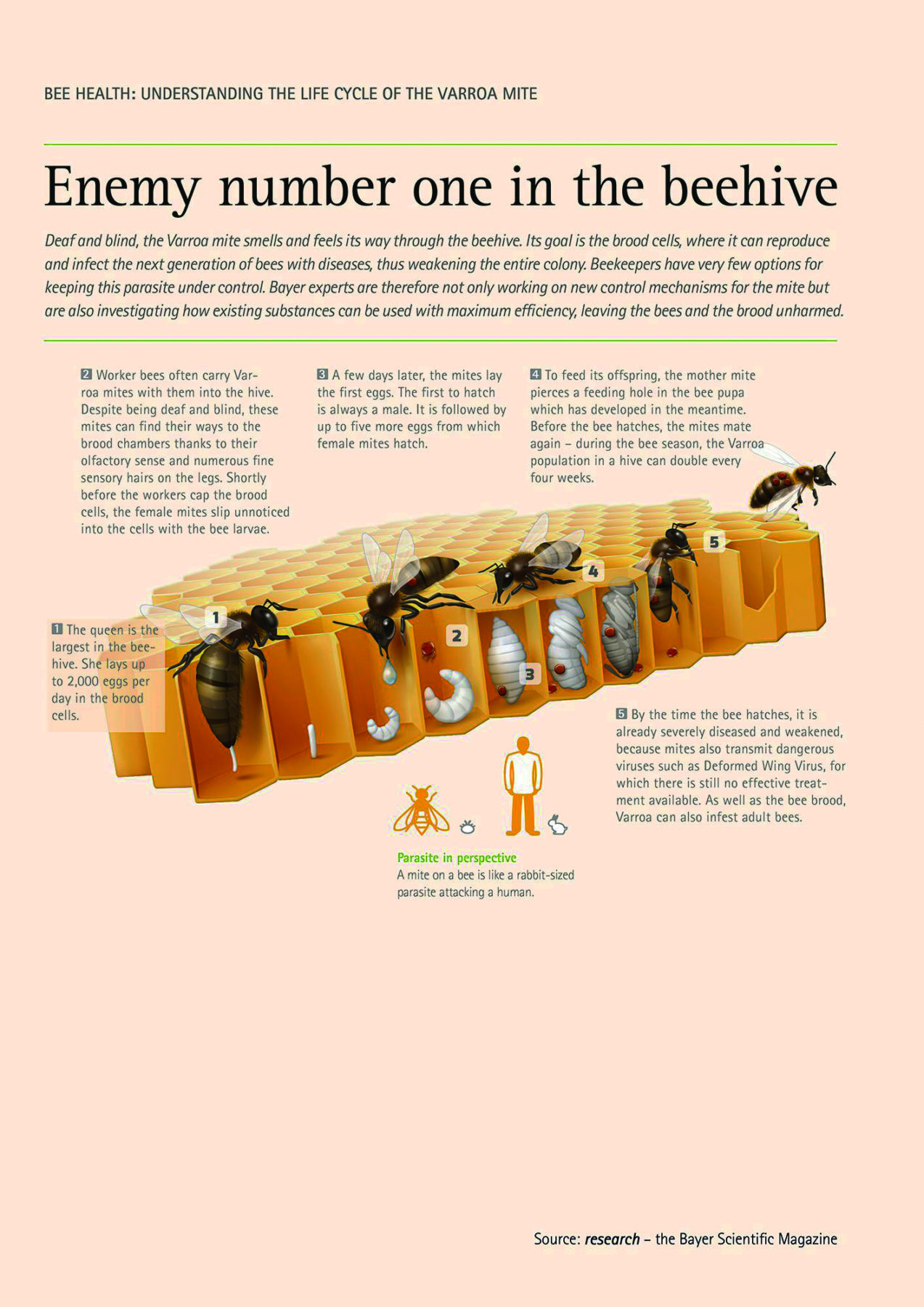
Australia is the only inhabited continent to escape the mite’s invasion, largely due to our rigorous biosecurity measures. “We’ve got a very good surveillance system run by Plant Health Australia, particularly on board ships before they enter ports,” Ian says. “It has managed to track [and halt] a couple of incursions, one in Townsville and one dead swarm in Melbourne. But with a seaboard as big as ours, there’s an element of luck as well.”
Luck, however, isn’t something multibillion-dollar industries like to rely on. Enter the Purple Hive Project. Created by Bega Cheese Limited, and funded by its newly launched product, B honey, the project is a groundbreaking collaboration between one of Australia’s biggest food companies, two start-up tech companies, “and one old beekeeper”, says Ian with a smile. It’s hoped it will save Australia’s bees from the varroa mite.
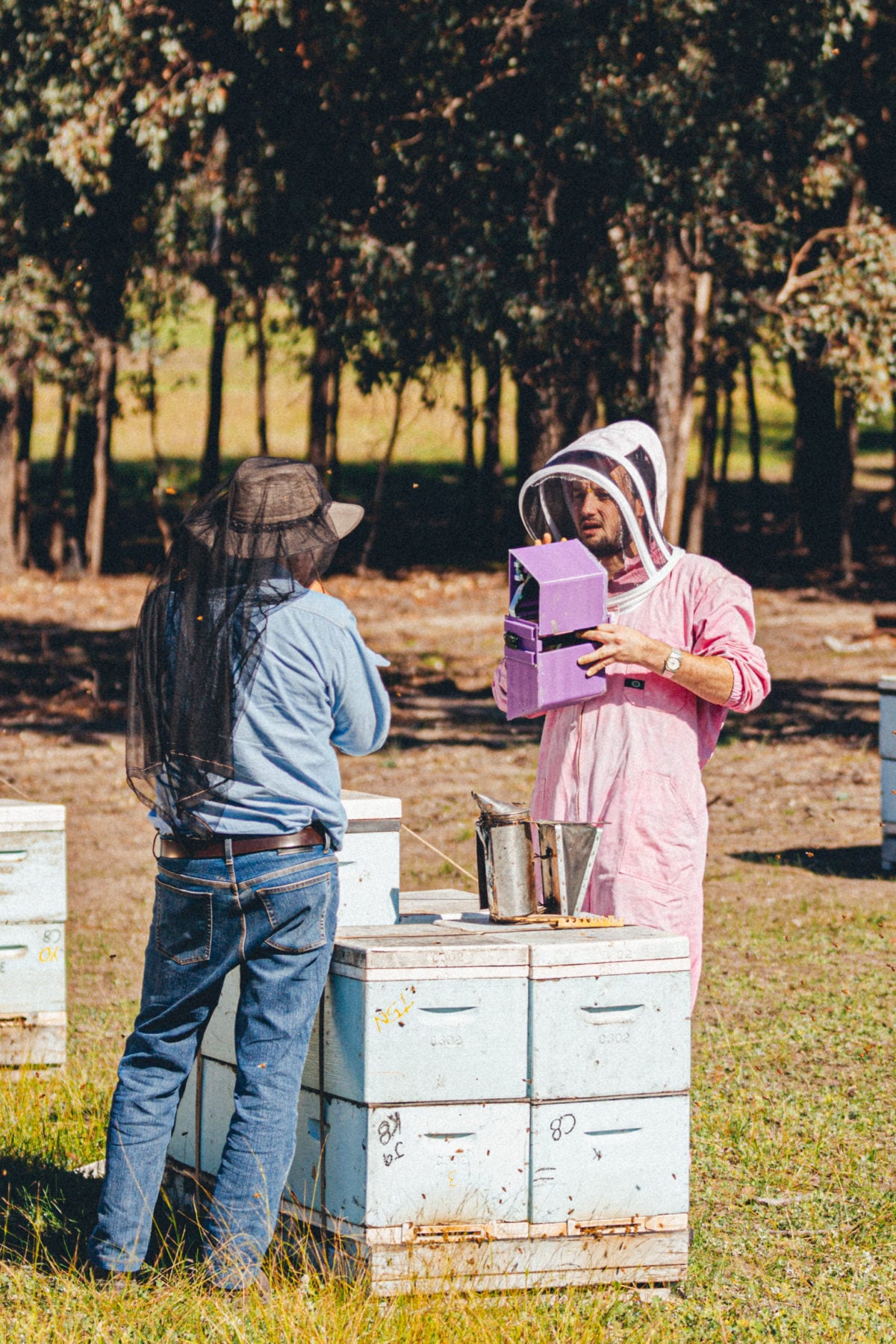
The Purple Hive Project
The Purple Hive Project doesn’t actually make purple beehives: instead, the bee-saving element in question is a unit that attaches to the entrance of the beehive and looks a little like a letterbox. Essentially, it takes photos of the bees and uses artificial intelligence (AI) to check them for mites.
“It has cameras top and bottom that cover 360 degrees of the bees as they enter and exit the hive over a glass platform,” explains Joel Kuperholz, CEO and co-founder of Vimana Tech, the company that created the unit. “From here, an image is captured to the onboard processor – that’s a mini-computer that has more power than the first spaceship that went to the moon.”
While Vimana Tech created the body of the unit, Xailient, another Australian tech start-up, created its brains. Its software homes in to identify a bee, and then looks for the mite. If there is one, it sends an alert over 4G wireless communications to the relevant authorities.
While the human eye finds it very difficult to identify the tiny mites, which are only about 1mm long, AI never gets tired or bored, works 24/7, and is constantly improving its detection.
Xailient’s CEO and co-founder Lars Oleson says, “Bega needed very small artificial intelligence to fit on Internet of Things [internet-connected] devices. And our breakthrough is exactly that. It’s the world’s smallest and most efficient computer vision.”
The company was particularly well qualified: its co-founder and chief technology officer Shivy Yohanandan is a neuroscientist and bioengineer who has a PhD in AI and worked on Australia’s first bionic eye.
Lars explains: “The challenge of Purple Hive is to be able to see the bees and the mites as they come in and out of the hive. And to do that we needed an artificial intelligence that’s trained on specifically that problem. That didn’t exist anywhere in the world.”
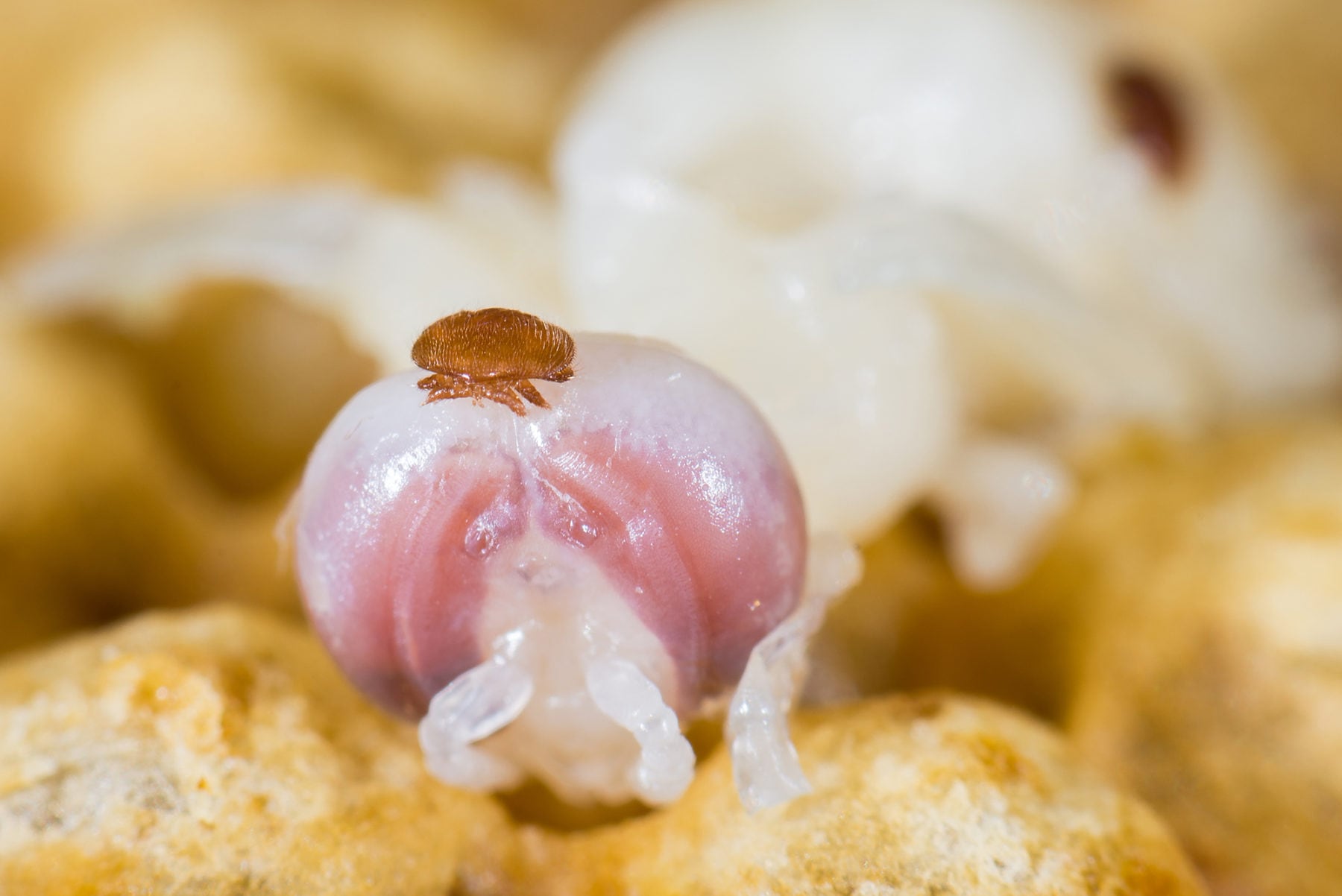
Not only did the Xailient team create the AI from scratch, it also devised a unit that uses as little energy as possible so it can operate on a solar-powered 12-volt car battery, the most reliable and efficient power source in the remote areas where bees are often kept. The unit also has to work with limited internet access, so that if it does detect a mite, it can send urgent alerts to beekeepers in real time (speed is vital in tackling a mite infestation).
“If you’ve ever tried streaming Netflix on your phone in the middle of the outback, you know that’s just not gonna work,” Lars says. So he and Shivy worked to keep the unit’s use of data as low as possible. “All of these things combined meant that no artificial intelligence anywhere in the world would fit the purpose yet for what Bega needed,” Lars says. “We’re really running AI vision on the extreme, tiny edge here,” Shivy chimes in.
Earlier this year, Xailient and Vimana Tech (along with designers Honest Fox and consultants Thinkerbell) set to work to build the Purple Hive from the ground up. “We couldn’t even get cameras that were specific enough,” says Joel. “We had to strip them back and 3D-print our own custom parts.”
The project was already complicated enough, and then COVID-19 happened.
Like so many other businesses around the world, the teams were forced to work remotely, with all the lag times and inefficiencies that that can entail. When it came time to test the unit’s powers of detection on real mites, lockdown meant the Vimana Tech team had to scrap their original plan of flying to New Zealand (the closest country infected with the mite) with their prototype unit and working on it in situ. Instead, they built a second unit and sent it over the ditch.
“Vig had to do some pretty funky coding so that we could operate it remotely in New Zealand,” says Joel of Vignesh Murugan, Vimana Tech’s co-founder and chief technology officer. “That threw a plethora of challenges up. We had to build in contingency after contingency so we could remotely diagnose if there were any problems, as well as actually iterate [create new and improved versions]. We had to be able to make changes here in Australia that had practical impact over in New Zealand on the test device.”
Perhaps the most significant element of the whole project is that it borrows from nature in order to help save nature.
“One of my PhD supervisors was a bee vision expert and we discussed bee vision efficiencies at length,” says Shivy. “So to make this extreme level of computer vision possible, we drew inspiration from nature to build AI that is now helping the bees. There’s a really nice poetic justice there.”
The Vimana Tech team also drew inspiration from the bees themselves. “It’s all designed around them, including the purple colour,” says Joel. “It’s purple because the bees are naturally attracted to that colour.”
Despite all its technical and practical challenges, the collaboration has created a fully functioning Purple Hive, and the development phase of the project has officially been declared a success according to Bega’s Adam McNamara.
“We are currently discussing the future home of our first Purple Hive – we’re going to be targeting the high-risk entry points into Australia, which typically are our ports,” Adam says. And the project won’t stop there. “Our long-term vision is to create a mesh network of hives across Australia, starting with those high-risk locations and looking to expand beyond that, not only to support the honey industry but also to support honeybee pollination-dependent industries as well.”
Adam’s vision of an interconnected, country-wide network of hives constantly on the alert for the invasion of mites is exciting to both conservationists and food producers alike.
But according to beekeeper Ian, “to assume that the mite will never get here, I think, would be naive – and the industry accepts that”.
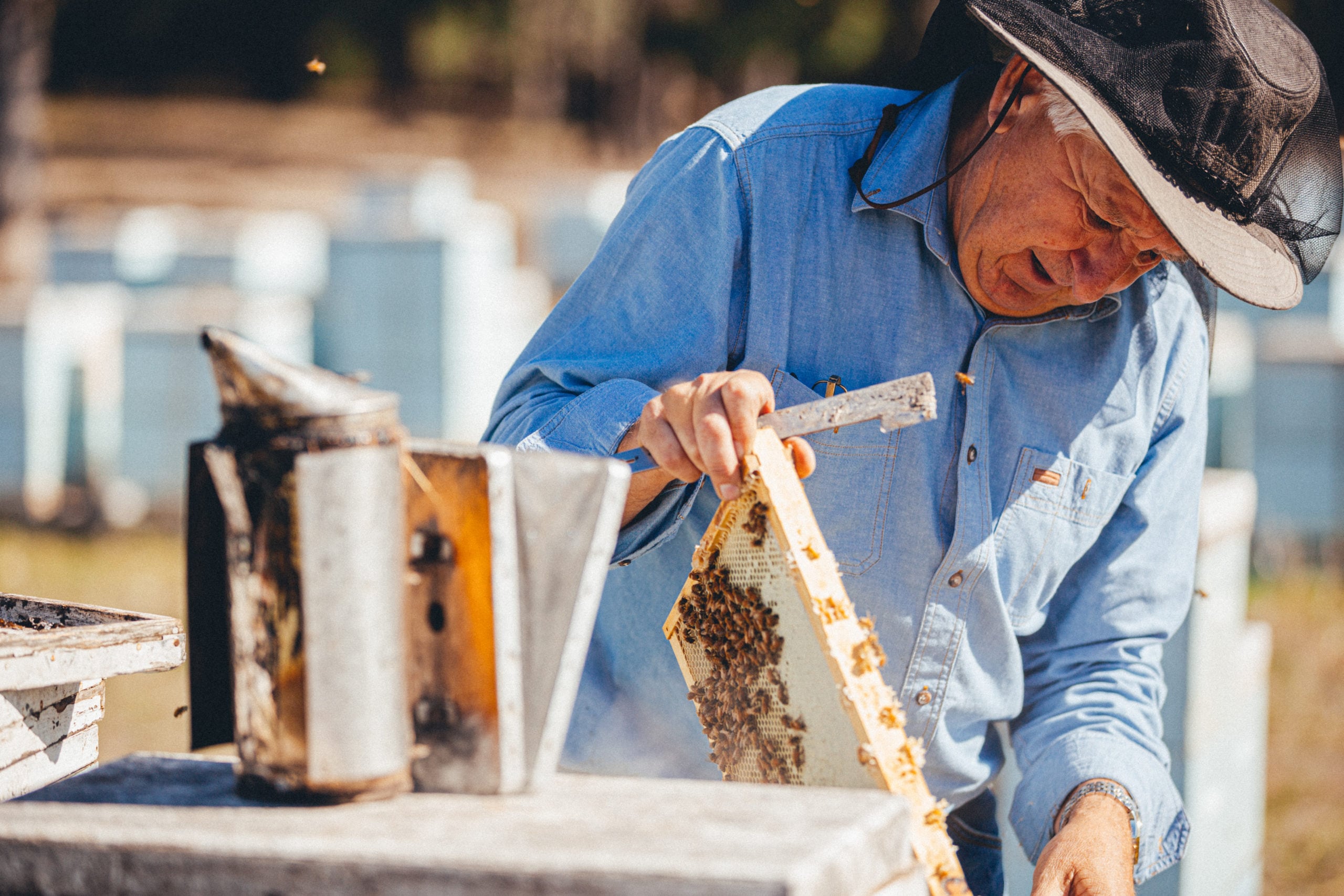
If and when the mites do eventually invade, however, the Purple Hives can serve not only as an early-warning system, but also as a monitoring system to track their spread. In the future, this technology may even support a yet-to-be-invented method of eradicating the mites completely. But that’s a way off.
For now, the Purple Hive Project team is justly proud of what they’ve created. “Australian farmers are really celebrated globally as being quite adaptive to technology, which is a testament to them,” says Joel. “And the Australian technology scene as well is really growing and emerging, and able to build things locally using Australian local businesses, manufacturers, designers and technologists. We don’t need to go to Silicon Valley to see the latest and greatest technology – we can do it here.”
From Ian’s perspective as a veteran beekeeper, the project is a vital piece in the bee-protection puzzle. “As always with prevention strategies, we need a multitude of tools in our kit,” he says.
“I believe that this will become one of the premier detection methods. It’s a game-changer.” But he has a warning, too. “We’ve made mistakes in the past around public land management issues. We need to be really mindful that healthy ecosystems for our bees are also so important for our food crops – and if we did get varroa, those ecosystems would be even more important, because it will be so difficult to keep healthy bees.”
And it’s not just the survival of ecosystems that concerns Ian. He’s also mindful of the vital role bees play in ensuring the survival of human beings.
“In the past 50 or 60 years we have underestimated how important food security is to a nation and the world,” Ian says. “Perhaps we have just seen a tiny snippet of that with COVID-19 and how quickly shelves can be cleared out at supermarkets. That’s why this whole program is so important. It is a great step for humanity in providing food security for our future generations.”
